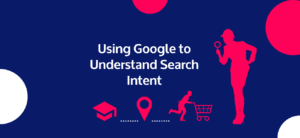How to rank in Google Maps in 2021
Table of Contents
Why Google Maps Ranking is Important
Google maps ranking without a doubt is the most important element of local SEO.
This is backed up by numerous studies, such as the one ran by Moz that indicates that 40% of clicks are allocated to the ‘three pack’ within the google maps listing, with 10% only going to paid results and around 30% going to first page organic search below the 3 pack. The rest is made up of users viewing other businesses within the google maps offerings and on a very rare occasion venturing on to the second page.
A Google study also found that 70% of mobile searchers use click-to-call a business from Google results. So as Google offers a direct call CTA within it’s map ranking results, the companies which are displayed, are going to have a far greater chance of receiving those leads than the organic sites below the 3 pack.
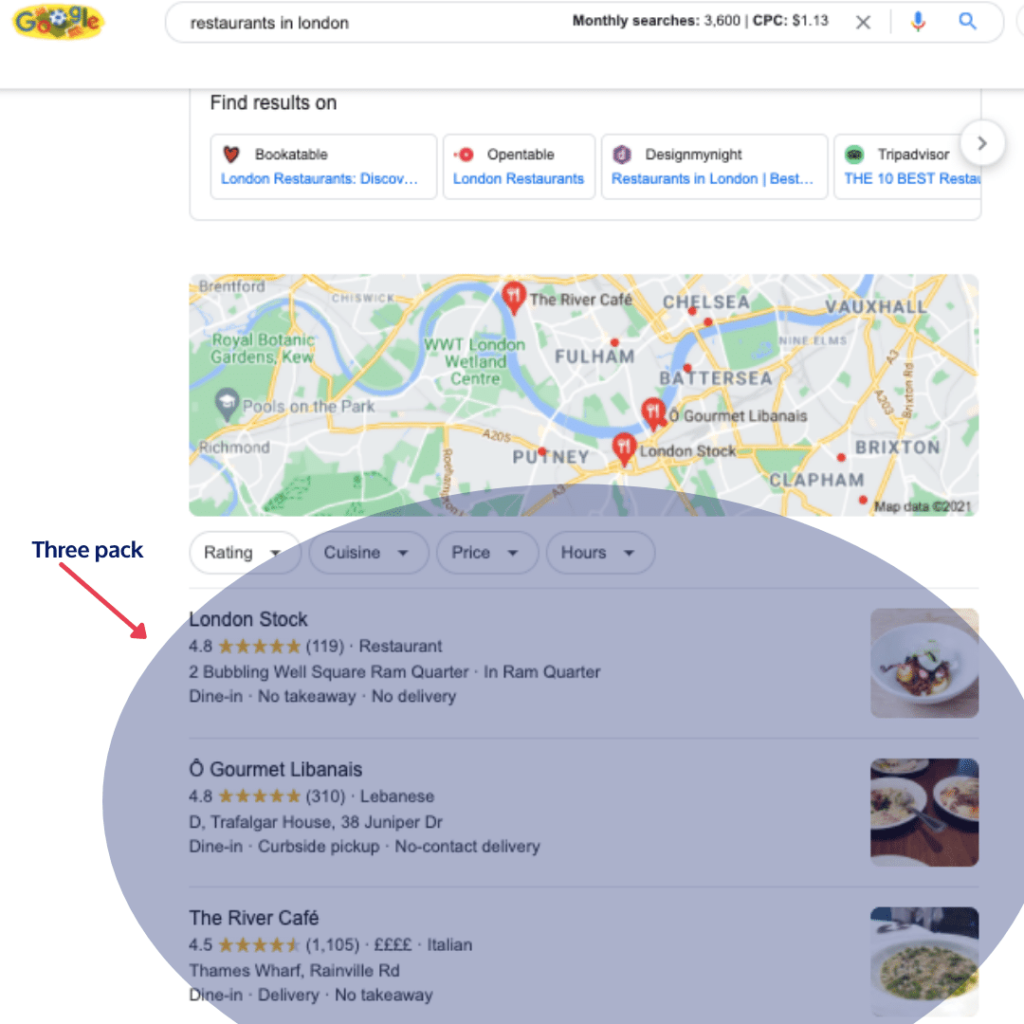
So ultimately, where companies will begin to see the greatest gains in regards to local SEO, is when they have both their business displayed within the three pack as well as being near the top of the rankings for the organic search results. This allows for increasing prominence and exposure, as you appear twice within the first page results, which dramatically increases the chance of the customer clicking through to your site or calling direct through the three pack.
The good news is that although it can often be difficult and long process to appear near the top of the first page for organic search results, getting into the 3 pack can be a lot faster, and often involves a fraction of the time invested to appear there.
So, now you have a quick idea of why ranking on Google maps is important, especially in regards to the three pack, you may be wondering how to achieve getting there.
How Google determines It's map rankings
Although Google won’t easily identify all the factors going into map ranking businesses, they do identify three distinctive areas which are of most importance, and these ultimately come down to Google trying to offer the best user experience above all else.
These are:
- Relevance
- Distance
- Prominence
Relevance
This is pretty self explanatory, the more relevant google sees your service offering to the search intent from the user, then the more likely you are to be ranking in the 3 pack. This is why it is crucial to submit the correct information within your GMB (Google My Business) profile, such as within the description, and service offering section.
Distance and Proximity
Again, this is what it says on the tin. The businesses closest to the users location term, will be more likely to appear in the three pack. If the user hasn’t submitted a location term then Google will use any other information possible, most commonly your GPS, which is how they connect you for ‘near me’ searches.
With service companies like plumbing, it can be a bit of a headache working out how to rank high in areas away from your business address. For example if you are a plumber in Brighton, and have your business address in the centre of Brighton, but you offer services throughout Sussex, figuring out how to remain at the top of the rankings for areas further out from Brighton is difficult. Although Google hasn’t offered too many easy remedies for this, it is something we have a few tips for below.
Prominance
This is referring to how well known a business is. In this case, being well known offline can actually benefit, as google tries to represent prominence in the offline world, not necessarily the online, for example they state within their Support info that “famous museums, landmark hotels or well-known shop brands that are familiar to many people are also likely to be more prominent in local search results.”
But ultimately, as a plumbing or HVAC company, Googles main way of telling your prominence will be through links, articles and directories, review count and score. This is why carrying out citations, asking clients to complete reviews and getting both relevant and high DA backlinks is so crucial.
If you want to geek out a little further 
How to achieve higher rankings
GMB - Listing optimisation
First I think it’s important to start with GMB. If you are unfamiliar with GMB, and you are trying to rank higher on Google maps, then the first step would be to check if your business is already verified.
If you have been around for a while, it may be that a previous customer, or employee has made a business listing for you. Or if you have a memory like mine… you may have even registered your GMB already and forgotten about it.
So to check, simply type in your business name into google and if you appear in the listing then you will already have been registered.
Correct info & elements
Next it is vital to make sure that your business info is correct, such as: your NAP (name, address and phone number), operating hours, a detailed description (inclusive of keywords), web links, primary and secondary service categories etc.
This step should not be taken for granted, as GMB elements were voted as the number one influencing factor for local map rankings on a MOZ survey in 2020 (as seen below).
Specifically it’s crucial that you include your primary keywords within your description, and make use of the space Google gives you. Also when filling in the category section, try to include a wide range of services that your business provides, in order to maximise your chances of appearing in the map ranking results for a variety of search terms.
You will also get an option of inputting the different areas you serve within your GMB. And so try to include a range of the main areas you cover especially if you are a service based company which doesn’t operate out of one set location like plumbing. However, don’t go completely nuts with this, as I am of the belief that it will eventually cause diminishing returns, as it dilutes your prominence for the other locations you have already submitted.
NB: One thing I often find with location based service companies, such as plumbing companies, is that they forget to link their website within their GMB. Your website will act as a landing page, and will be crucial for increasing conversion rates, so DON’T FORGET THIS!
Regular & relevant posts
By making sure that you post on a consistent basis within your GMB, you are signalling to google that you are an active business, and so they will be more likely to push you up the google maps rankings. This is similar to posting on twitter or facebook.
What is particularly effective is posting videos and photos on a weekly basis if you can, as this appeals to consumers much more, which Google obviously loves, as it’s all about user experience!
This is not only best practice for Google, but It is also a good way of highlighting to customers that you are here and ready for business, just as much as it is for Google.
Getting GMB Reviews
Reviews can make or break a business no matter what industry they are in, and as you can see from the Moz ranking factor survey above, they are deemed as the second most important factor to get ranking on Google maps in 2020.
This has to be one of the least technical methods in getting a higher ranking for the Google maps, and requires very little work from your side, as long as the business is providing a high quality service in the first place.
Top trick: One of the best methods I was told by a plumber with a ridiculous amount of 5 star reviews. Is by inputting the review link at the bottom of his invoice, with a polite message explaining how to leave a review if the customer wouldn’t mind, he was able to get a customer review the large majority of the time. It’s so simple, yet so effective.
Replying to you reviews is also an effective way of showing activity within your GMB, displaying good customer service, and acts as a way to mitigate the damage from negative reviews. NB: If you receive negative reviews, make sure you reply in a professional manner, so future customers aren’t put off when they look into your lower rated reviews.
On-page website optimisation
If you are familiar with on page optimisation, you will likely know the dramatic impact it can have on pushing your site up the organic search rankings. However, I imagine you are not too sure how it can impact your rankings within google maps. These points below should give you a good idea of how you can start to increase your google map rankings through on page optimisation.
Consistency across GMB and website
When you link your landing page (likely your home page) to your GMB, google will take the data from that page and use it as relevance factors to determine the google maps ranking.
With this in mind the first thing is to check that your information on your website is aligned to the latest information on your GMB. If not, Google will see this as a factor for causing poor user experience as there are inconstancies within your listings and website, thus causing lower rankings.
Area, Name, Business category/service
As I just mentioned, Google will use the info on your landing page to reinforce the information it has from GMB and other citations of your business online.
So it is important to make sure that you are creating consistent mentions of your Area,Business Category, and business name.
This can be done within the H1 tags, which are the main heading tags on your site, your meta description (which is the description explaining what the site is about before someone clicks on it), and then content within your site.
“make sure that you are creating consistent mentions of your Area,Business Category, and business name.”
E.g. if I am a plumber in Manchester, which primarily focusses on boiler services. Then I may have a H1 tag on my homepage saying something like Digital Rainmaker – Manchester Boiler Plumber. It doesn’t always need to follow that order, and it may be that often it is hard to fit in all three without seeming unnatural, but where possible follow the ‘area, name and business category’ process and it will help with your google maps ranking.
Embedding Google Maps on site
This is one of my favourites. So simple, whilst also adding a little extra flair to the site. By embedding google maps into your site footer, or contact page, you are essentially telling google that you are located where the listing says it is. NB: To help reinforce your location to google and remain consistent to the information you have provided them, it is important to use the same address as your Google maps listing.
To be able to embed maps, as you can see below what we have done here on one of our plumbing sites – Hot Flame Plumbing. There are two methods you can take. Firstly, you may have the option to embed Google maps easily as a template dependent on the CMS platform you are using, or web builder on WordPress. Alternatively, you can head over to Google maps and search for your company name, then click on the share button within the listing, and you should be able to copy and paste the link to your business contact page.

Citations
Now that you have a good idea about some on the on page changes you can make to help get higher google maps rankings, let’s take a look at citations which are an off page element that can have a big impact on your google maps ranking results.
Building out citations, is a way of reinforcing the data you have provided Google, additionally it also adds another method of customers finding you online, through the likes of directories.
When completing citations, if Google finds that information you have provided on sites like Yelp is inaccurate and inconsistent from your GMB and website, then they will begin to lose trust, and it will have a negative impact on your rankings. However, if it is aligned with what you have provided on your GMB, and your website, then these citations can have a huge impact for both your organic search rankings, and your google maps rankings. So when carrying out citations consistency is king, followed by the industry relevance and domain authority of that site.
Citations can come in all different forms, typically they would be your NAP (name, address, phone number), however it may also be things like:
- Driving directions
- Videos
- Photos
- PDF’s
- Links to social
- Business description
- Geo-coordinates
- Operating hrs
Driving directions hack to multiple location ranking
If you recall, when we were previously talking about distance/proximity, Google will default to using your main location submitted within your GMB. If you are a service based business which travels to multiple locations then this can cause all types of frustrations, as you won’t be appearing in the top of the google map rankings for the other areas you operate.
So one of the ways you can increase your chances of appearing in multiple signal locations, such as a ‘plumber near me’ search in Brixton as well as a ‘plumber near me’ search in Clapham, is by submitting driving directions from all these different points.
With driving directions you are sending signals from the multiple different geo areas you wish to operate within. Now once you have those driving direction URL’s, you can begin to create links to them through niche specific sites, which help’s strengthen their authority, and thus your prominence in different areas.
To do this:
1. First type in the name of your company, and then click on directions in the listing. For this example I simple types in ‘plumbers near me’, and selected a random one. Which meant it was Hegarty Plumbing and Heatings lucky day.
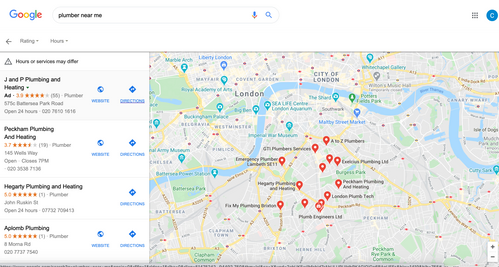
2. Next, you want to input a location which is within the zone you are operating. For this example I just picked Clapham Junction stations, but a good way of doing it is picking post codes or Burroughs. As you will see below, this will give you directions to your listed location on your GMB, and thus helps with increasing your proximity to these other areas.
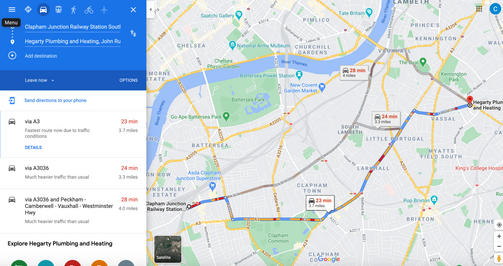
3. After this, you will need to click on the menu bar located in the top left, which will give you a drop down option, and you should select ‘share or embed map’. Which will give you a link to copy.
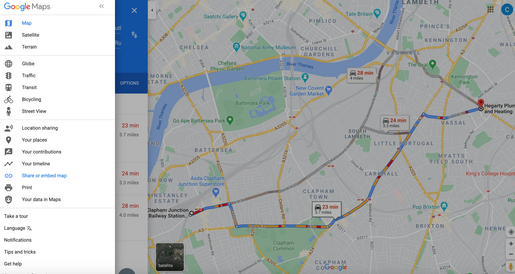
4. Ultimately from this point, you can replicate the process so you have multiple links for multiple different directions from you main listed location. Then you should begin uploading those links onto high domain authority sites, as citations.
5. Finally, from here you can begin to swarm the citations with backlinks, which will increase the page authority for that citation, and therefore increases the influence it will have on you being found in those other geo locations. If Google penalises the citation for too many backlinks, then it won’t matter as you can disavow the link to your site, to prevent any harmful penalties later down the line.
Conclusion
To wrap up, hopefully this has given you a good run down of how google maps ranking works, and the steps you can take to get into the three pack for more then once location or service offering.
It is hard to tell exactly what the most influencing factor Googles algorithm places on ranking businesses within Google maps. However, based on studies, my personal opinion and steps which you can easily take, I would first start focussing on uploading the correct business information to you GMB which is centred around the search terms and locations you wish to rank for, as well as maintaining regular activity on your GMB, such as gaining reviews, replying to reviews, uploading photos etc.
If you feel a lot of the more technical work would be best for us to carry out, and you want us to take a detailed look at your GMB, as well as carrying out a website audit, then do get in touch! As we will be more then happy to organise a free consultation to work out how you can increase your organic and google maps traffic.





